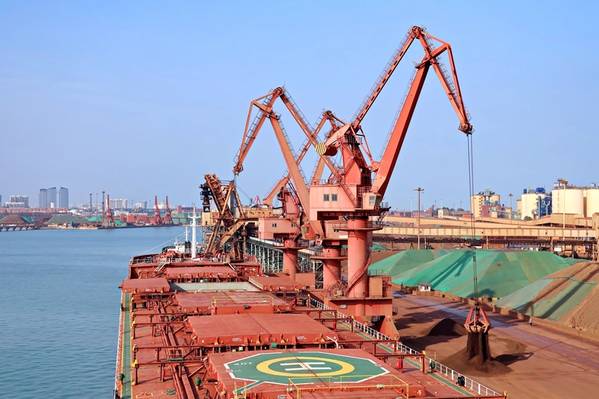
Iron ore prices have been a model of stability in recent months despite the increasing clouds over the outlook for the key steel raw material.
The benchmark Singapore Exchange contract ended at $95.25 a metric ton on Monday, down from $95.89 at the previous close but up from the recent nine-month low of $93.35 on July 1.
However, the range in the price between that low and the high so far in 2025 of $107.81 a ton on February 12 is a narrow $14.
In 2024 the range between the high and the low was around $52 a ton, about $32 in 2023 and $82 in 2022.
The lack of volatility in iron ore prices so far in 2025 comes despite the ongoing uncertainty over the tariff policies of U.S. President Donald Trump, and what impact these will have on global trade and economic growth.
There is also uncertainty over the strength of China, the world's second-biggest economy and buyer of about 75% of global seaborne iron ore volumes.
The key residential property sector remains weak and the export-orientated manufacturing sector also faces headwinds from the tariff barriers, with the United States currently imposing 55% tariffs on imports from China.
Iron ore has not been immune to China's economic concerns, with commodity analysts Kpler tracking a fall in imports in the first half of 2025.
Seaborne imports were 604.8 million tons in the January to June period, down 4% from the 630.1 million tons over the same period in 2024, Kpler data showed.
The decline in imports fits with the 1.7% decline in crude steel output in the first five months of the year, with official data showing production of 431.63 million tons.
The modest decline in China's iron ore imports is also mirrored in other buyers.
Japan, the second-biggest iron ore importer, saw arrivals of 43.85 million tons in the first half of 2025, down from 45.13 million in the same period last year, according to Kpler.
South Korea's imports were 34.69 million tons in the first six months, down from 36.35 million, while Europe saw arrivals of 40.17 million, down from 41.33 million in the first half of last year.
Overall, global seaborne imports were down 3%, or 25.09 million tons, in the first half to 818.01 million.
The price impact of the decline was mitigated by lower supply from top exporter Australia, which shipped 460.02 million tons in the first half, down from 464.34 million for the same period in 2024, with weather-related disruptions behind the small drop.
Number two exporter Brazil saw a slight increase to 179.15 million tons from 176.24 million, while shipments from the third-ranked South Africa were steady, as were those from number four Canada.
However, India's exports of iron ore slid as the fifth-biggest shipper saw a decline of 40%, or 9.76 million tons, to 14.69 million in the first half.
Lower prices compared with prior years hit India's exports, which tend to be of poorer quality iron ore.
The overall picture that emerges for the seaborne iron ore market is that the stability of recent months is built around China's appetite for imports dropping only slightly.
It's also worth noting that while much of the commentary focuses on the risks to the Chinese economy from property weakness and U.S. tariffs, some sectors such as automobile manufacturing and infrastructure remain solid.
If iron ore prices do come under pressure from a weaker outlook for the second half, it's also likely that Chinese steel mills and traders will take advantage to restock inventories.
China's port inventories, as monitored by consultants SteelHome SH-TOT-IRONINV, dropped to 133.4 million tons in the week to July 4 from 133.6 million the prior week.
The current level is down from 149 million tons in the same week last year, indicating there is scope to add to them if prices do moderate.
(Reuters)



